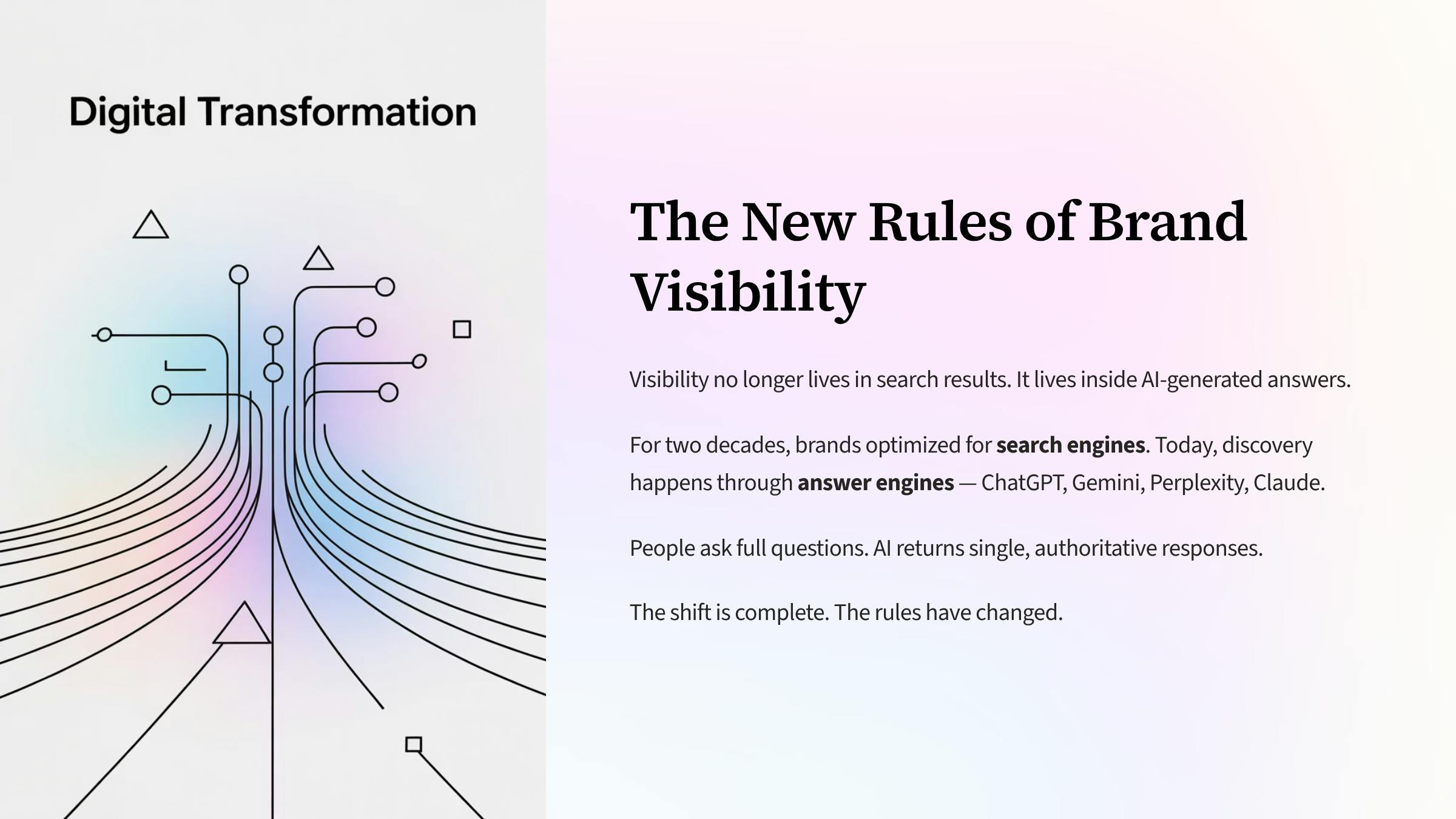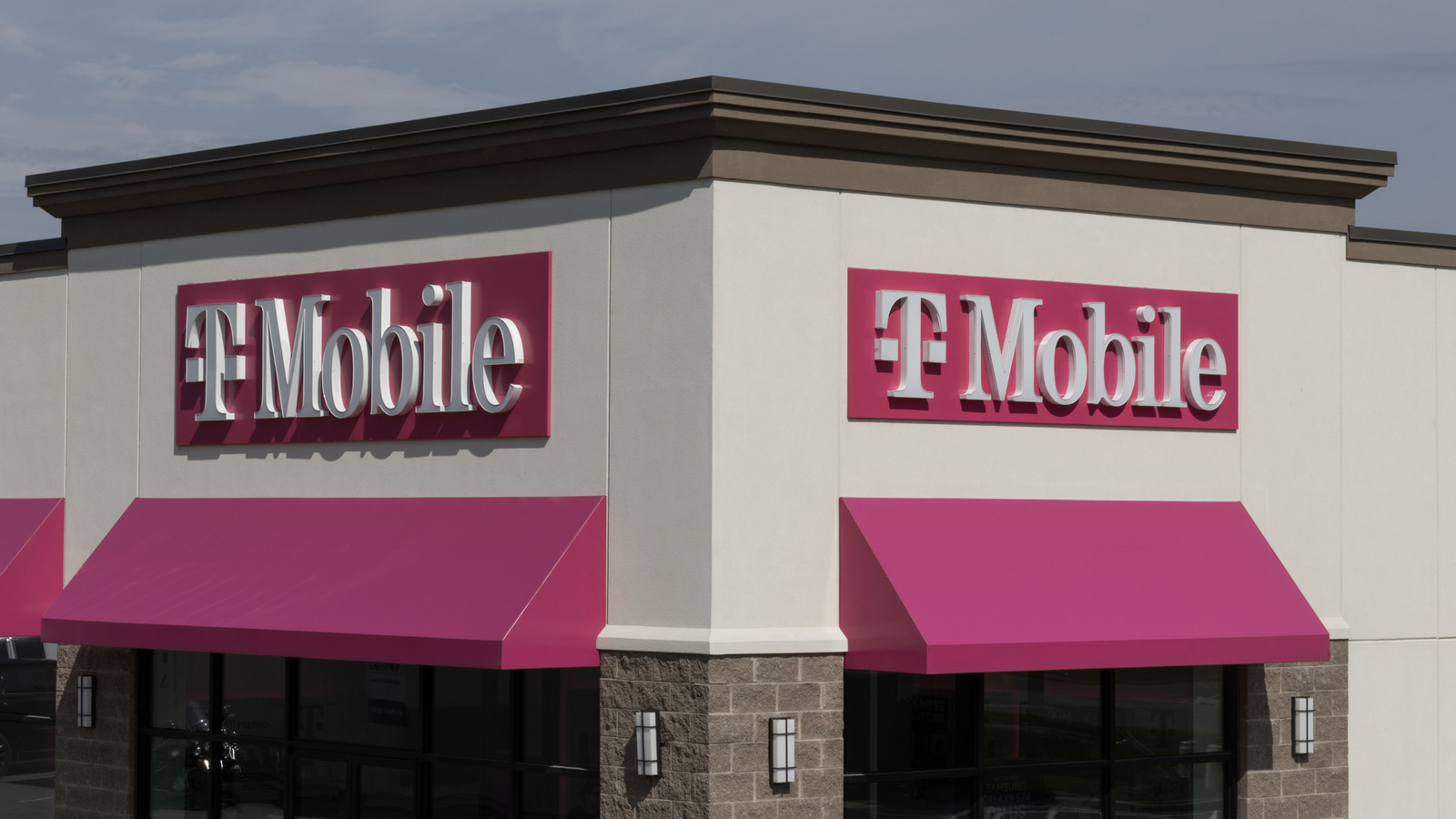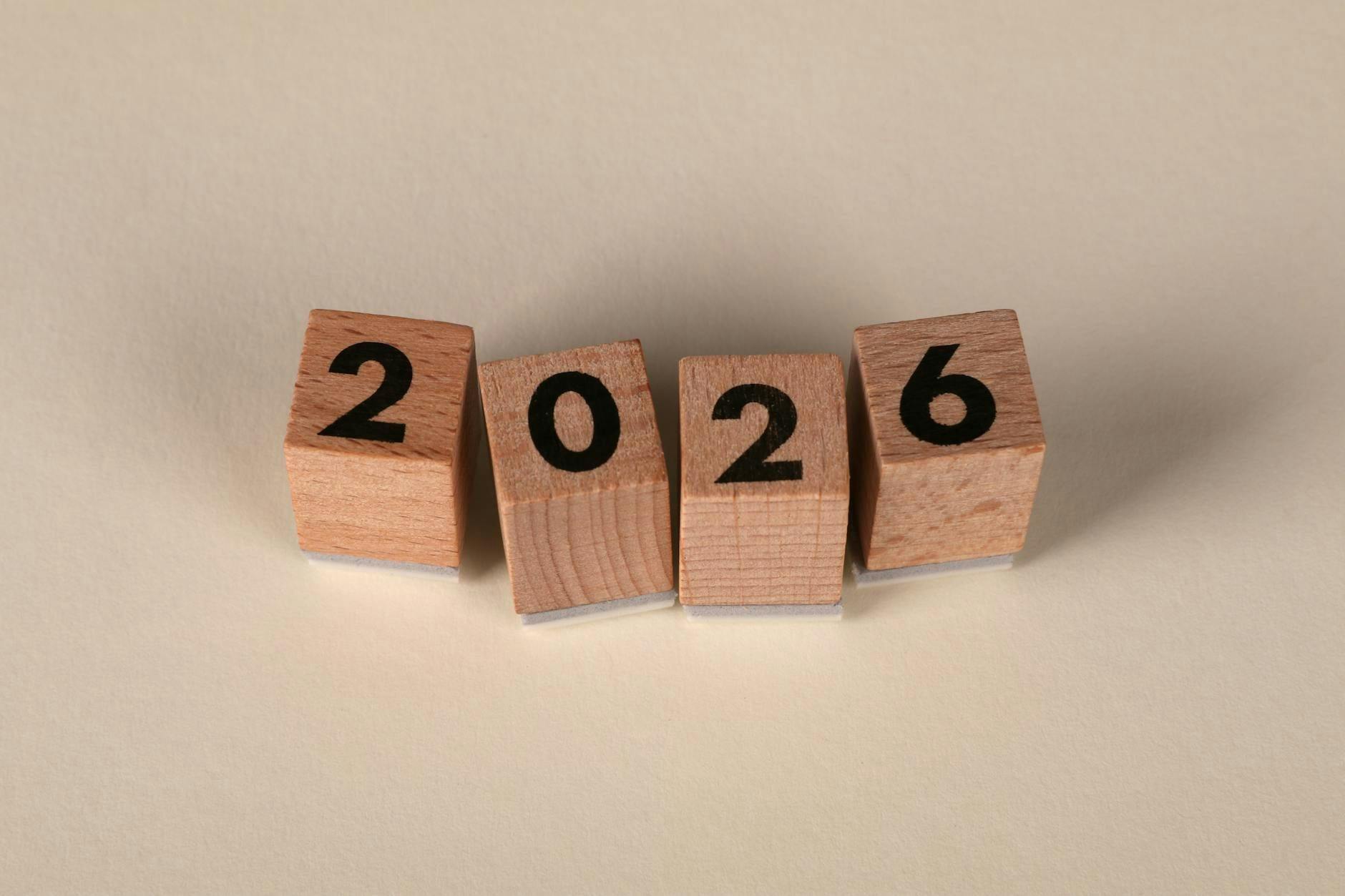The rules of visibility are changing faster than most brands can adapt.
For the past two decades, visibility meant optimizing for search, tracking keywords, backlinks, and web traffic. But in the generative era, discovery has moved from search engines to answer engines.
People aren’t typing keywords anymore; they’re asking full questions. And the systems responding — ChatGPT, Gemini, Perplexity, Claude, and others, aren’t returning ten blue links. They’re returning single, authoritative answers.
That shift means visibility itself is being rewritten.
From Search Visibility to AI Visibility
Traditional SEO was built on inference. A keyword hinted at what a user wanted, and marketers optimized pages around those assumptions.
But prompts — the way people now speak to AI — reveal something deeper. They show intent in full context: the problem, the comparison, and the decision.
“What’s the best cybersecurity platform for small financial institutions?” n “Who are the top AI consultants for enterprise adoption?” n “Which brands are trusted in sustainable packaging?”
Each of these questions represents an opportunity — or a blind spot — for brands. The challenge is that most companies have no idea whether they appear in these AI-generated answers.
That’s where the concept of an AI visibility baseline becomes essential.
Mapping the Machine’s View: How New Tools Define Visibility
A growing set of tools is emerging to measure this machine-facing visibility layer. One of the most advanced is the Prompt Discovery Index™, developed by Zen Media, which uses large-scale prompt analysis to establish an AI visibility baseline for brands.
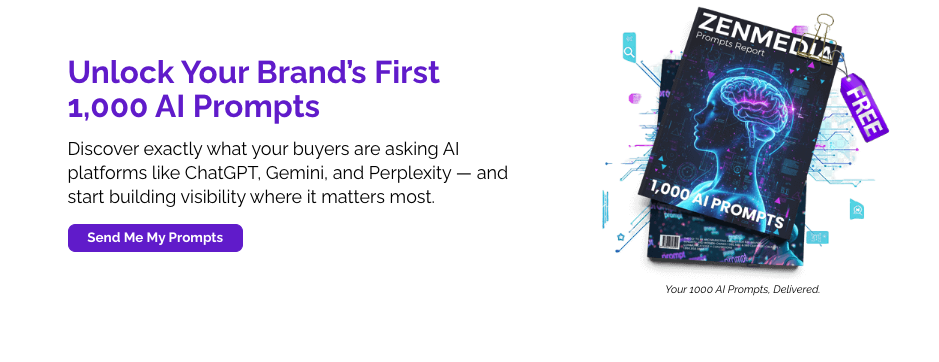
The system tracks 1,000 to 10,000 real prompts per brand, across ChatGPT, Gemini, Perplexity, Claude, and Google’s AI results, revealing where companies appear inside AI-generated answers, and where they don’t.
It replaces keyword-based metrics with something more relevant to the AI era: prompt share, the percentage of AI-generated answers in which a brand is mentioned, referenced, or cited.
For communications and marketing teams, this shift reframes visibility as something measurable and machine-readable. Establishing that baseline gives leadership a way to track how reputation and authority evolve inside generative ecosystems.
Why Every Brand Needs an AI Visibility Baseline
Establishing a baseline means understanding your current visibility across generative platforms — where your brand appears, how often, and in what context.
Without that baseline, brands are flying blind in the most significant shift in digital discovery since the birth of Google.
AI engines are already shaping perception:
- Buyers are validating vendors through AI summaries.
- Journalists are verifying sources and context through conversational tools.
- Investors are analyzing market landscapes using generative queries.
In each of these cases, if your brand isn’t part of the answer, it doesn’t exist in the conversation.
Visibility in this context is no longer earned through backlinks or ad budgets — it’s determined by how machines interpret your authority.
And because those interpretations evolve dynamically, establishing a snapshot of where you stand today provides the only measurable benchmark for growth.
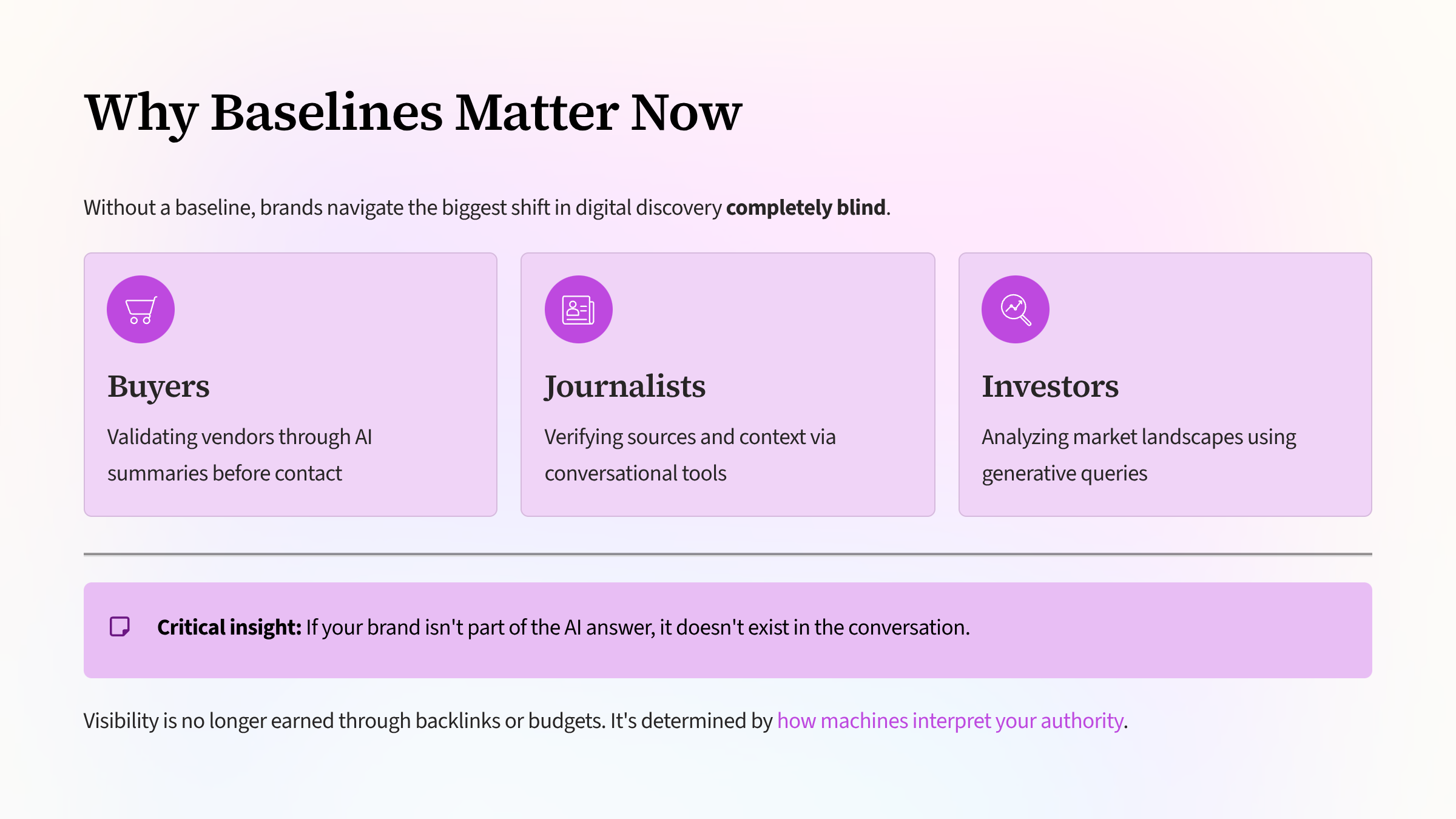
Measuring What AI Actually Sees
Emerging systems such as prompt indexing and AI visibility mapping now make it possible to see how a brand surfaces across generative models.
Instead of keyword rankings, these tools measure prompt share — the percentage of real user prompts where a brand is referenced, cited, or suggested inside AI-generated responses.
By tracking 1,000 to 10,000 prompts across multiple engines, companies can map which conversations they own, which they’re absent from, and how visibility shifts over time.
For communications and marketing teams, this data offers more than curiosity. It provides clarity:
- Which narratives are reinforced by AI?
- Where are competitors dominating the conversation?
- What white space exists that traditional analytics can’t see?
Understanding that layer gives leadership teams a foundation, a measurable starting point for AI-native brand strategy.
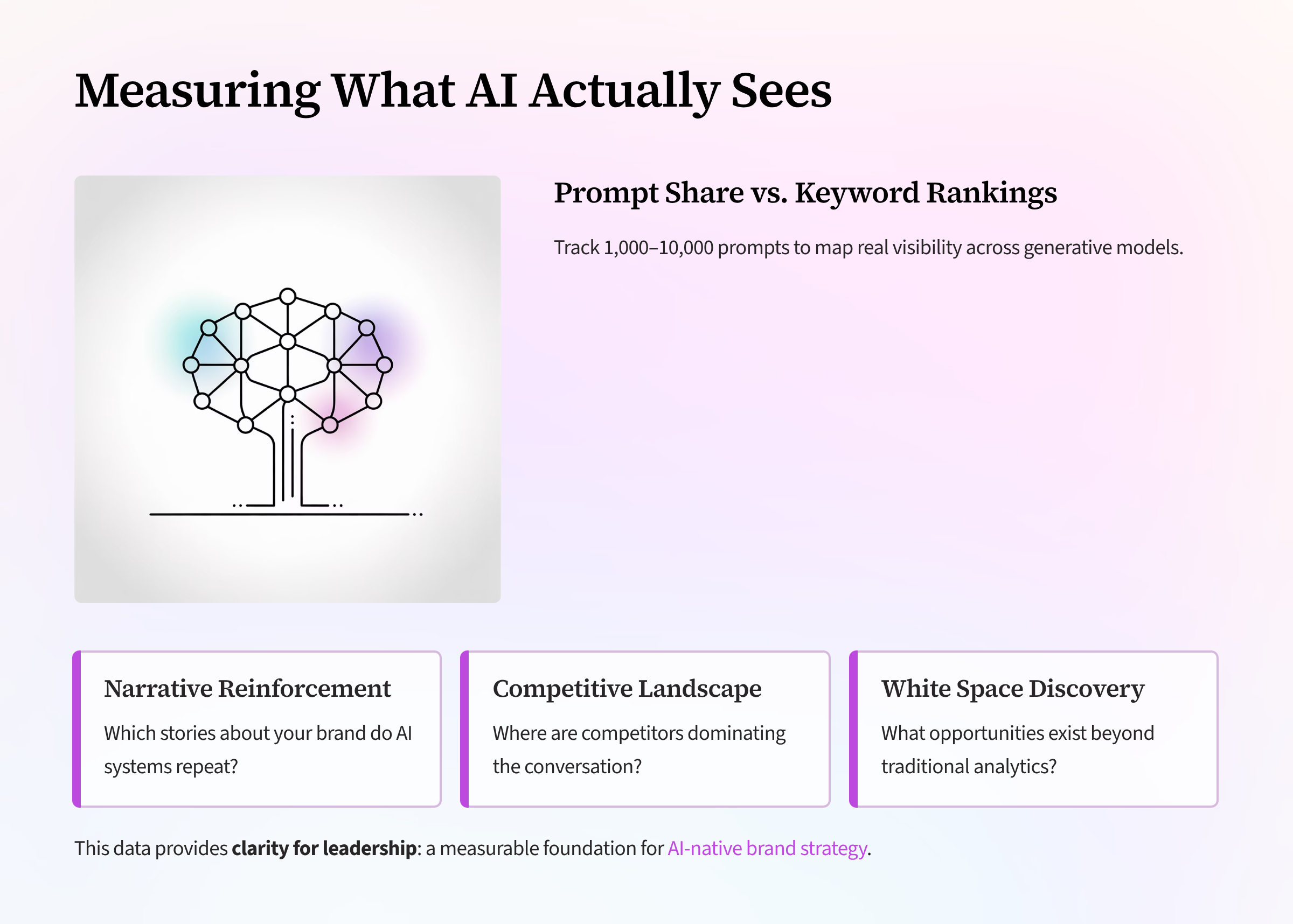
The Cost of Waiting
The temptation for many brands is to wait and see. But generative visibility operates on momentum. AI systems learn from repetition — the more often a brand appears in credible contexts, the more likely it is to appear again.
That compounding effect means brands establishing their baselines now are building historical data that future models will reference.
In practical terms:
- Early mapping defines your brand’s authority signal before competitors flood the same categories.
- Visibility gaps identified today can be turned into strategic opportunities through content, PR, and data partnerships.
- AI reporting becomes a boardroom metric — a way to demonstrate brand presence where human discovery is increasingly automated.
Waiting, on the other hand, means starting from zero when the algorithms already have a story written without you.
A New Literacy for Modern Brands
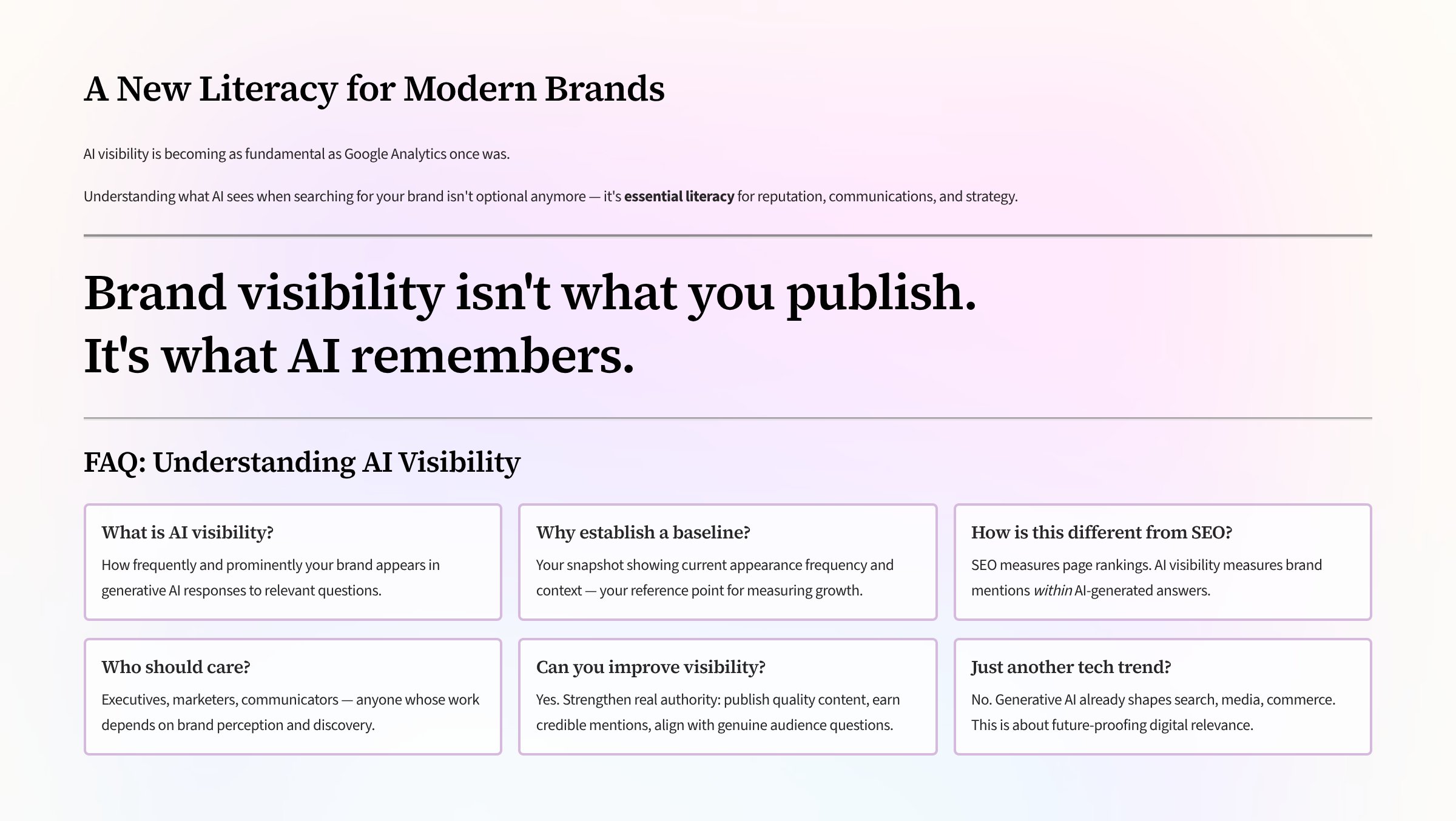
AI visibility is a new literacy requirement for anyone responsible for reputation, communications, or strategy.
Understanding what AI sees when it looks for your brand is becoming as fundamental as understanding what Google Analytics once showed.
Whether that baseline is created internally or through third-party tools, the value lies in awareness: knowing where your brand stands in a world where machines now mediate visibility, trust, and influence.
Because in the generative era, brand visibility isn’t what you publish, it’s what AI remembers.
FAQ: Understanding AI Visibility and Baselines
**Q1. What does “AI visibility” mean? AI visibility refers to how frequently and prominently a brand appears in generative AI responses. It’s a measure of whether AI systems recognize, reference, or recommend your brand when users ask questions relevant to your industry.
**Q2. Why is establishing a baseline important? A baseline is your visibility snapshot — it shows how often your brand currently appears across AI models and in what context. Without it, you have no reference point to measure growth, influence, or gaps in AI perception over time.
**Q3. How is AI visibility different from SEO? Traditional SEO measures how well a page ranks in search results. AI visibility measures how well a brand appears within answers generated by AI systems. It’s a shift from optimizing for clicks to optimizing for citations, mentions, and model recognition.
**Q4. Who should care about this? Executives, marketers, communicators, investors, and product teams — anyone whose work depends on how a brand is perceived or discovered. In an AI-driven world, visibility shapes reputation, reach, and relevance.
**Q5. What factors influence AI visibility? Visibility depends on the brand’s digital footprint: credible mentions, media coverage, educational content, structured data, and contextual relevance. The stronger and more consistent those signals are, the more likely AI systems are to surface the brand in responses.
**Q6. Can brands improve their AI visibility? Yes, but not through manipulation. The best approach is to strengthen real-world authority: publish high-quality content, earn credible mentions, and align messaging with the questions audiences are genuinely asking. AI mirrors that ecosystem.
**Q7. Is this just another tech trend? Probably not. Generative AI is already shaping decisions in search, media, and commerce. Understanding your baseline now is less about chasing a trend and more about future-proofing your brand’s digital relevance.

